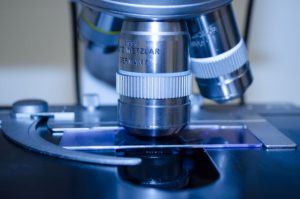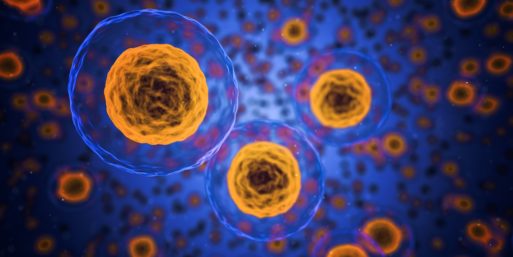Recent bad news verified that life expectancy in the United States has dropped for the second year in a row, Better news, however, emerges from a 2017 study that suggests the secret to longevity exists in a high-energy molecule present in every one of our cells.
That molecule — adenosine triphosphate (ATP) — is a complex organic chemical that provides energy to drive many processes, such as muscle contraction, nerve impulse propagation and chemical synthesis in living cells. The report — in layman’s terms — reveals that just as tired bodies function poorly, so do tired cells (that is, cells depleted by a decreased level of ATP.) And, based on this latest study of cell behavior, maybe, just maybe, a depleted cell may be able to repair itself.

Credit: U.S. Air Force, Savannah L. Waters
The “Energy Maintenance Theory of Aging,” authored by researchers Snehal Chaudhari and Edward Kipreos of the University of Georgia, establishes that the survival of older animals requires the maintenance of adequate cellular energy levels. The study addresses the link between ATP levels and aging, based on broad research showing that stored energy levels decrease substantially as animals age.
Chaudhari and Kipreos used roundworms to study the impact of mitochondrial size on lifespan. Mitochondria, thought of as the powerhouses of the cell, generate the majority of ATP in the body. They can fuse together to become larger or fragment to become smaller. The fragmented ones are less efficient at generating ATP than the larger ones.
The roundworm used in the experiments has many pathways by which animal lifespan can be lengthened through mutations in specific genes. Each pathway affects different cell processes and are largely independent of each other. The researchers discovered that 9 out of 10 longevity pathways had increased levels of mitochondrial fusion. Inhibiting mitochondrial fusion reduced the extended lifespans of animals for all nine of the long-lived pathways.
The Exception to the Rule
“What was of interest to us was the exception,” said Kipreos, “the one longevity pathway that had long lifespan even if we inhibited mitochondrial fusion.”
The pair discovered that the single pathway that did not require mitochondrial fusion for lifespan extension, had a mutation in the VHL tumor suppressor protein, which has been shown to increase ATP levels independently of mitochondria. That led Chaudhari and Kipreos to revisit the broader literature on ATP levels and aging in diverse animals, including humans.
While previous theories emphasized the damage that free radicals (or unstable molecules) – generated by aging mitochondria – can do to cells, Chaudhari and Kipreos noticed something else in their work.
“Our research presented a simpler model,” said Kipreos. “Our research suggested the possibility that the damage to mitochondria (observed as animals age) was not contributing to aging through increases in free radicals. But rather, the damage to mitochondria was preventing the mitochondria from carrying out their central purpose of generating ATP.
“Maintaining cellular energy levels allows the cell to provide sufficient energy for repair pathways that prevent ‘cellular aging’,” continued Kiipreos, who affirms the Energy Maintenance Theory is compatible with major theories of aging.
Co-author Chaudhari adds, “Recognizing the role of maintaining energy levels during aging would have significant implications for regimens to delay the negative aspects of aging,”
Substantial evidence in”Energy Maintenance Theory of Aging,” supports the theory that increasing or maintaining energy metabolism promotes the survival of older animals. Increased ATP levels in older animals allow energy-intensive repair and homeostatic mechanisms such as biological pathways that act to prevent cellular aging. Chaudhari and Kipreos’ observations support the emerging theory that maintaining energy metabolism promotes the survival of older animals. The ramifications of their findings on human longevity are life-affirming and, possibly, life-extending.

 Link Between Longevity and Cellular Energy Level Strengthens
Link Between Longevity and Cellular Energy Level Strengthens



 Our Monthly Tip: Toast a Loved One with a Personalized Glass
Our Monthly Tip: Toast a Loved One with a Personalized Glass
 My Cousin’s Death Taught Me the Meaning of Life
My Cousin’s Death Taught Me the Meaning of Life














